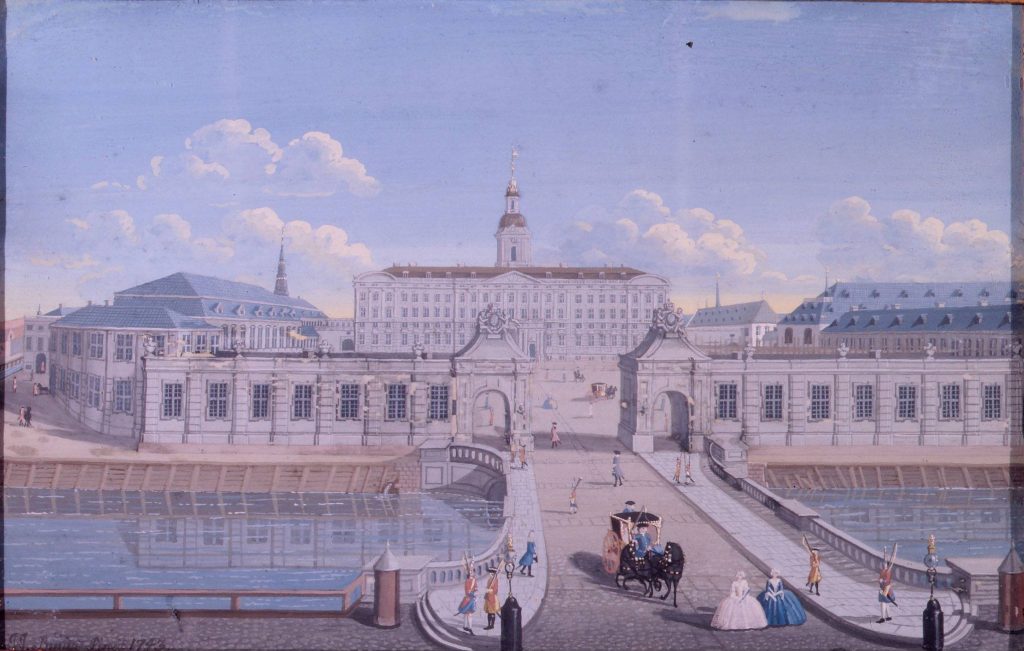1167
Bishop Absalon's castle is built on Slotsholmen to defend the city against potential enemies.

1369
Absalon Castle is captured by the Hanseatic League and demolished stone by stone.

Ca. 1380
Copenhagen Palace is built on top of the ruins of Absalon Castle. The castle eventually becomes the king's primary residence, and Copenhagen becomes the capital of the kingdom as a result.

1731
Copenhagen's Palace is demolished because it no longer meets the demands of the time and the foundation is cracking, causing it to collapse into the moat. Then Christian VI begins the construction of a new and modern royal palace - the first Christiansborg.
1740
The first Christiansborg Palace - the most magnificent building in Danish history - is inaugurated. The cost of construction corresponds to about half of a year's state budget.

1794
The first Christiansborg Palace bursts into flames and is left in ruins. The stable wings, where the Royal Stables are located today, survived the fire, as did individual objects, paintings and furniture.

1828
The second Christiansborg Palace is inaugurated by Frederik VI The King now once again has a real royal palace in Copenhagen. The style is neoclassicism by one of our greatest domestic architects - C. F. Hansen.

1884
The second Christiansborg Palace burns to the ground. Christiansborg Chapel survives the fire and continues as the Royal House's primary church. Certain furniture, paintings and objects also survive the fire and are reused in the current Palace.

1928
The third and current Christiansborg Palace is inaugurated. The palace is designed as Reception Rooms for King Christian X and the Royal family. The second wing is designed for the Danish Parliament and the County Parliament.

2025
Today, history still happens at Christiansborg Palace every single day. This is where the King holds audiences and receives heads of state from all over the world. It's also where both the Danish Parliament and the Prime Minister's Office are located.

